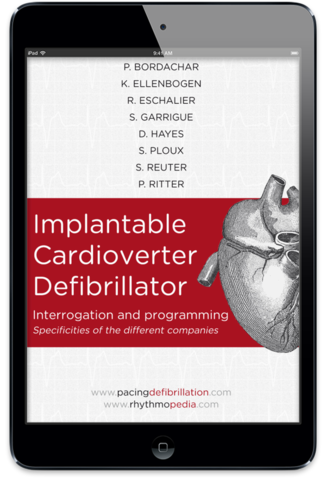Despite great progress in the medical management of heart failure and coronary heart disease, sudden cardiac death remains a major health challenge, with an incidence estimated at 1-2/1,000 population. Among cardiac arrhythmias, ventricular fibrillation is the number one cause of sudden cardiac death. Less often, a bradyarrhythmia or electromechanical dissociation is documented. Electrical defibrillation is the only treatment of ventricular fibrillation. The survival rate after resuscitation from out-of hospital cardiac arrest is approximately 5%. The first implant of a cardiac defibrillator was performed by Michel Mirowski et al. in 1980. Important technological development and multiple randomized trials have contributed significantly to its refinement. Today, implantable-defibrillators are recognized as the gold standard to prevent sudden cardiac death.
Indications and international recommendations for implanting a defibrillator have considerably progressed and distinguish 2 high-risk populations: 1) patients who have suffered an episode of aborted sudden cardiac death or a life-threatening tachyarrhythmia (secondary prevention), and 2) patients without a history of life-threatening tachyarrhythmia who have major risk factors (primary prevention).
Initially, implantable-defibrillators were limited to the delivery of high-energy, monophasic shocks without anti-bradycardia or anti-tachycardia pacing capabilities. Their implantation was complex, using epicardial patches and leads. State-of-the art, transvenous defibrillators have become extremely complex and offer a large number of programmable parameters, whether for cardiac pacing, counting the cycles, discriminating the origin of the arrhythmia and the various therapies.

S.E.D.D. Implantable Cardioverter Defibrillator
Format: Ebook
80,00 €



